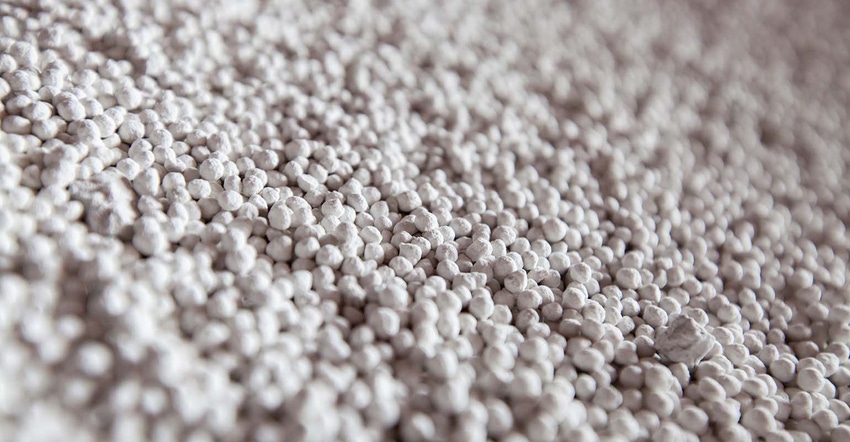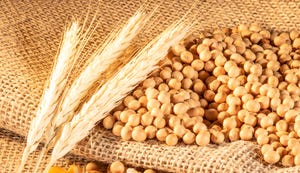
Fertilizer prices and availability have been hot topics in ag markets this year, but last Thursday’s World Agricultural Supply and Demand Estimates report was the first time that USDA formally quantified production risks for potential production shortfalls due to input accessibility.
USDA officials made a point of sharing in the Secretary of Agriculture briefing following last Thursday’s WASDE reports forecasts that limited fertilizer and input access in Ukraine will not dramatically reduce Ukrainian crop yields this year, but the availability issues could still have a negative impact.
It wasn't the first time this year that fertilizer concerns have surfaced in global production forecasts and I’m guessing it won’t be the last, either. USDA attaché reports released in the month prior to Thursday’s WASDE release cited concerns about corn, soybean, and wheat yield shortfalls due to fertilizer, fuel, and other input availability primarily for Brazilian and Argentine 2022/23 production forecasts.
The Russian war in Ukraine has thrown into doubt supply availability for springtime planting in the Southern Hemisphere in the latter part of this year. Brazil imports nearly all of its fertilizers and was reliant upon now-sanctioned Russian and Belarusian supplies for 20% of its nitrogen consumption, 11% of its phosphate requirements, and a staggering 40% of its potash needs.
Brazil has received a couple shipments of Russian potash in recent weeks and its officials are currently negotiating volume increases with Canadian fertilizer producers as well. The Brazilian government is working frantically to ensure supplies are available to growers when planting begins later this year. While the fruits of these labors are not yet measurable, yield will be the ultimate tell of the successfulness of this strategy.
Potential implications for 2023
High prices and questionable availability suggest that growers around the world may cut back on investments into soil fertility, especially if crop prices fall. That would result in lower yields and even smaller production during an era of tight grain and oilseed stocks. Grain prices would continue rising, but there would physically be less food volume available to keep the global human and livestock population nourished.
To be clear, this is a hypothetical concern. We will not see any evidence of yield losses due to reductions in fertilizer applications until later in the growing season. And – at least in the U.S. – those worries are probably not warranted for the 2022/23 crop year because growers largely had adequate access to desired fertilizer supplies.
It is important to remember that USDA’s concerns about fertilizer availability in the Southern Hemisphere this year are likely foreshadowing potential yield contractions next year (2023/24) in the Northern Hemisphere. Even with supply chain challenges for the fertilizer market this year, Northern Hemisphere fertilizer supplies were abundant for the current growing season now underway, so this is not yet an immediate concern.
The outlook for the 2023/24 growing season is murkier than 2022/23 in terms of inputs. Crop prices typically fall before input prices do, so global farmers could be forced into a situation where high input costs cause fewer fertilizer applications if crop prices fall.
I don’t see any immediate danger of that during the summer months thanks to tight supply forecasts for crops and potential production challenges in the Northern Hemisphere – that will be a more pressing concern this fall as plans for 2023/24 are made and planting progress is made on Southern Hemisphere crops. Fertilizer producers are expanding production and redesigning inventory strategies in response to the high-price environment, but we do not yet know if it be enough production and available in a timely manner to satiate demand.
Fewer or skipped applications can irreversibly tank yields. The U.S. is reliant upon yield production to maintain its competitiveness in global markets with players in the Black Sea, South America, and China. Yield shortfalls due to skimpy fertilizer applications could cause severe damage to U.S. growers’ viability with global buyers, so there is little incentive for U.S. growers to scale back on soil fertility plans for the 2023 season.
Fertilizer availability is obviously not the most significant issue facing U.S. farmers in early May as the market juggles planting delays and shrinking grain supplies. But it is an issue that is going to be relevant for the next couple years, so ensuring crop sales are locked in to cover future soil fertility is currently the safest way for farmers to hedge against these looming issues.
About the Author(s)
You May Also Like






